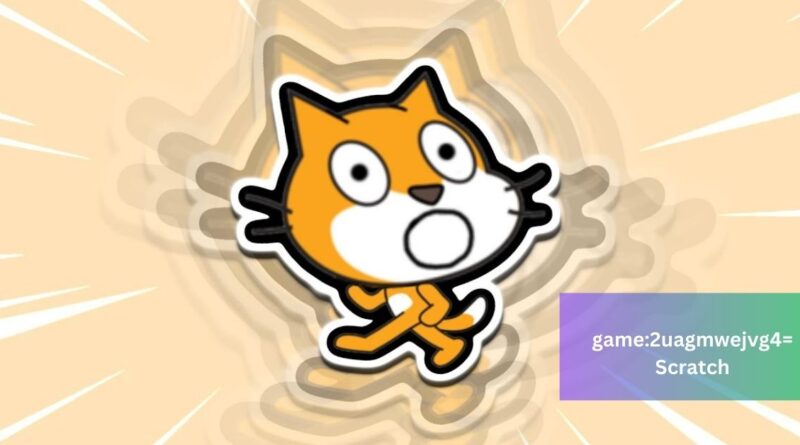game:2uagmwejvg4= Scratch – Game Development Potential!
So, you’re ready to dive into game development but don’t know where to start? game:2uagmwejvg4= Scratch is one of the best platforms to jump in! Whether you’re a complete beginner or just looking to expand your skills, Scratch is a game-changer. It’s not just about making games; it’s about learning to think like a developer and unlocking your creative potential.
In this guide, we’re going to walk you through how to harness game:2uagmwejvg4= Scratch and start building your own games. From understanding its basics to creating your first project, this step-by-step tutorial will equip you with everything you need to get started. Ready to turn your ideas into a fully interactive game? Let’s go!
Why Scratch is Perfect for Game Development – Start Your Game Today!
You might be thinking, “Is Scratch just for kids?” The short answer is no. Sure, Scratch was designed to teach young minds how to code, but it’s actually an incredibly powerful tool for beginners of all ages. Here’s why:
- Visual Programming: Scratch uses a block-based programming system, which means no writing complex lines of code. Just drag and drop blocks to create actions, movements, and game mechanics. It’s a visual, intuitive way to understand programming concepts without getting bogged down by syntax.
- Create, Share, and Remix: Scratch’s community is vibrant. You can share your projects, get feedback, and even remix other creators’ projects. This helps you learn quickly by seeing how others solve problems and implement new ideas.
- Endless Possibilities: Want to create a platformer game? Done. How about a puzzle game or a simulation? Scratch can handle that too. It’s flexible enough to create anything your imagination can dream up.
- Perfect for Learning Game Design: Beyond coding, Scratch teaches game design principles—like logic, storytelling, and user experience—so you can go beyond just “getting things to work” and focus on making your game fun, engaging, and polished.
Ready to start building your game? Scratch is waiting for your creativity. Jump in and see where your imagination takes you!
Getting Started with game:2uagmwejvg4= Scratch – Create Your Account and Begin Today
Set Up Your Scratch Account and Dive In!
Before you can start creating, you’ll need a Scratch account. This step is simple and free.
- Go to Scratch’s website and click on “Join Scratch.”
- Fill in your basic info (you’ll need a username and password) and create your account.
- Once you’re logged in, click on the “Create” tab at the top. This will take you to the project editor, where all the magic happens!
Now that you’re set up, let’s walk through some basic features you’ll use most often.
Already created your account? Let’s move on to mastering the interface and start building your game step-by-step!
Designing Your First Game in Scratch – Start Creating Your Game Concept Now
1. Define Your Game Concept – Let Your Ideas Take Shape
Take a moment to think about what you want your game to be. Here are some questions to guide you:
- What’s the objective of the game? Is the player trying to get to the end of the level, solve a puzzle, or defeat enemies?
- What’s the genre? A platformer, shooter, racing game, or something else entirely?
- What mechanics will your game have? Will the player jump, shoot, collect items, or explore?
- What challenges will the player face? Think about obstacles, enemies, or tricky puzzles.
Need help figuring out your game idea? Check out our examples SuperHardAlgebraProblems.com below to spark your creativity, and don’t be afraid to brainstorm different genres!
2. Create Your Sprites and Backdrops – Design Your Characters Now
- Designing Sprites: You’ll need at least one sprite to get started—your main character! Go to the “Choose a sprite” button and either select one from the library or use the paint editor to create a custom one. You can also animate your sprite by creating multiple “costumes” for actions like running or jumping.
- Designing Backdrops: Your game will need a setting. Click the “Choose a backdrop” button to select a background or paint your own. The backdrop is the stage for your game, so think about how it will fit with the game’s theme. A space-themed game will need a starry sky backdrop, while a jungle platformer could have trees and vines.
Already have your main character in mind? Let’s jump into coding the gameplay and making your sprite come to life!
3. Set Up Basic Game Mechanics – Get Your Game Moving!
Here comes the fun part—coding the game! Remember, Scratch uses block-based programming, so it’s like putting puzzle pieces together.
For character movement:
- Drag a “when green flag clicked” block (this starts the game).
- Then add a “forever” block (so your character keeps moving indefinitely).
- Inside the forever loop, add blocks for motion:
- “move 10 steps” for walking.
- “if on edge, bounce” to keep the character from falling off the screen.
For jumping:
- Use a “change y by” block to move the sprite up when the player presses the spacebar. This creates a jump action.
For collisions:
- Use “if touching [sprite]” to check if your character is hitting an obstacle or an item (like a coin).
Want to see it in action? Start experimenting with these blocks, and watch your game come to life!
Testing and Debugging – Test Your Game and Perfect It!
Testing is where the magic happens. After building your basic game mechanics, play through your game. Does your sprite jump correctly? Do the obstacles react as expected?
Common Issues to Look For:
- Controls not working: Double-check your blocks for correct placement.
- Sprite movement too fast/too slow: Adjust the “move” values or add smoother transitions with “glide” blocks.
- Game-breaking bugs: Use the “pause” or “debug” blocks to see what’s going wrong.
Ready to debug? Test your game and iron out any issues—your final version will be flawless!
Adding Sound and Music for a Better Experience – Make Your Game Pop!
Sound can totally elevate the player experience! Here’s how to add audio to your game:
- Sound Effects: Use sound blocks to add a sound when the player jumps, collects items, or defeats enemies. You can find sounds in the Scratch library, or you can upload your own.
- Background Music: Add some atmosphere to your game with background music. You can loop it to play continuously while the player is navigating through the levels.
Want to add a custom soundtrack? Create your own or find sounds from the Scratch library and see how it enhances your game!
Sharing Your Game with the Scratch Community – Let the World Play Your Creation!
Once you’re happy with your game, it’s time to share it! Click the Share button to publish your project. You can add a description so people know what your game is about and encourage them to try it out.
Remix and Learn from Others
One of the coolest things about Scratch is the ability to remix other users’ projects. You can learn new techniques, get inspiration, and improve your own game by seeing how others do it.
Excited to see others try your game? Hit that share button and become a part of the thriving Scratch community today!
Conclusion:
Building your first game in game:2uagmwejvg4= Scratch is just the beginning. Scratch is an excellent way to learn the fundamentals of game development and coding, but the real fun begins when you start experimenting and building more complex projects.
Remember, game development is all about creativity, problem-solving, and persistence. Don’t be afraid to make mistakes, try new things, and share your work with the community. Who knows? Your next project might be the next big thing!
Ready to create your next game? Dive into Scratch, experiment, and don’t forget to share your creations with others!
FAQs About game:2uagmwejvg4= Scratch
1. How do I create advanced games on Scratch?
Once you’ve mastered the basics, try using Scratch’s extensions to add more advanced features like multiplayer, video sensing, or custom soundtracks. Experimenting with these tools will give you the power to create more complex and engaging games.
2. Can I make money with Scratch games?
While Scratch itself doesn’t allow monetization directly, it’s an excellent portfolio builder. You can showcase your skills and use your Scratch projects as stepping stones to more professional game development platforms like Unity or Unreal Engine.
3. How do I make a multiplayer game on Scratch?
Scratch doesn’t support real-time multiplayer out of the box, but you can simulate multiplayer by using cloud variables to store player data. This lets players compete or collaborate through turns or asynchronous gameplay.

